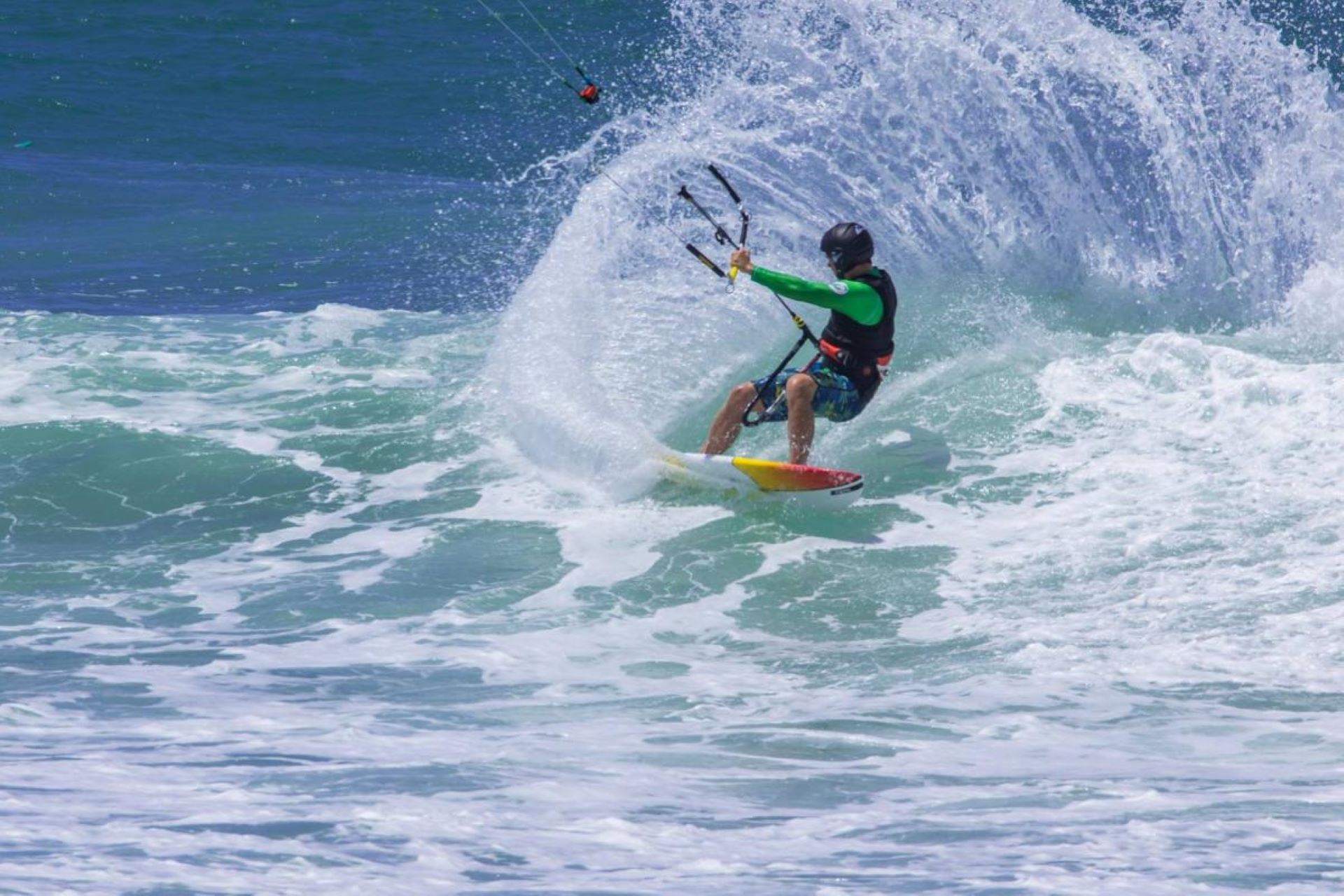Riding on a Wave

Tired of flat water twin-tip riding? Challenge yourself and diversify your practice riding the waves! You can use your twin-tip for the first discovery attempts however it is recommended to switch to a directional board, keeping the straps for aggressive riding, or removing them for smooth or freestyle riding! You will be more in contact with the element. Be sure to know the tides, currents and that the waves are not too big for you! Never use a board leash as it is very dangerous and remember that the rider riding a wave has the priority over the others. To improve faster, you can attend an Evolution Course or Clinic with a certified IKO Coach!
Kiteboarding in Light Winds

The right of way must be given to other ocean and beach users. Kiteboarders must travel downwind of them. Why? A regular ocean or beach user cannot react as quickly as a kiteboarder can, so be on the lookout for swimmers and others in the vicinity and ride around them. Additionally, staying downwind of regular beach users will help prevent injury to them in the event that you lose control of your kite (losing control upwind of swimmers could result in a dangerous collision, as you and your kite could wind up dragging them). Be aware of all others in the area
Judging Wind Speed With and Without a Wind Meter

You just arrived at your favorite spot, it’s windy- but you need to estimate the wind speed to select the right equipment. If you do not have a wind meter with you, there are other solutions. First of all, check someone who is already riding and has similar weight, level and board to yours. Is he riding a 9m without being under/overpowered? Then you will be totally fine with your 8, 9 or 10m kite! If nobody is currently riding, check if there is no restriction for kiting there (law, off-shore conditions without boat support). Remember that you should not ride alone. If you are the first rider, you can evaluate the conditions using the Beaufort scale and watch the elements. Finally, if you use a wind meter, remember that at a height of 20m the wind is about 35% stronger than what you are measuring at human’s height. If you are not sure about the wind conditions, go to a local IKO Affiliate Center or an IKO Instructor, who will give you the most accurate information about local conditions.
New vs. Used Kiteboarding Gear

New is always better! But new is also much more expensive… Nowadays there are no big differences between a kite from the same brand with a difference of 1 year. Whilst the model of the year will cost you 1500 USD, the same one of last year with different colors may cost you half of this price. Many riders are taking really good care of their equipment and they sell it after not so many sessions each year because they want the latest model! So why shouldn't you take advantage of these great deals and spend less money for the barely same product? You can also ask your local IKO Affiliated Center for used school kites; they might have great deals when they renew their material!
